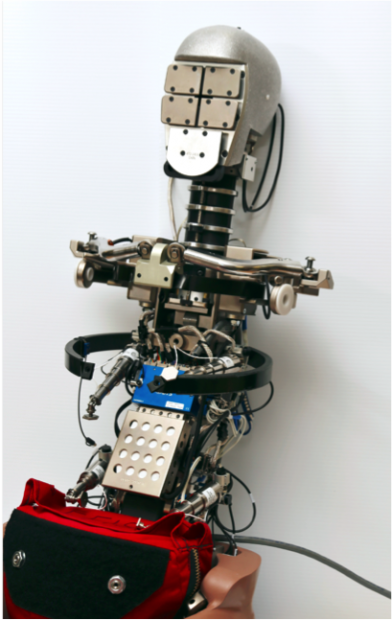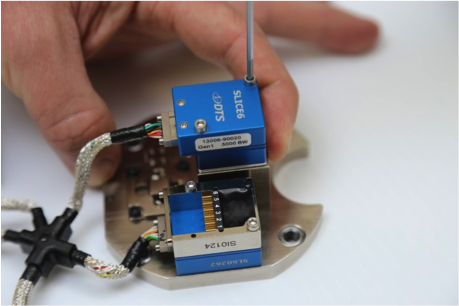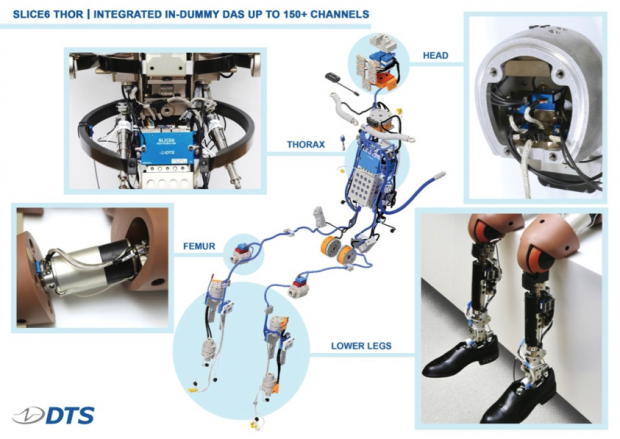How Embedded Data Recorders are Changing Crash Testing
Latest News
August 8, 2018
As crash labs worldwide prepare for new consumer and regulatory automotive safety tests, there are several factors to consider. First, many tests now specify THOR, the new frontal impact anthropomorphic test device (ATD) that is replacing Hybrid III after nearly 40 years as the industry standard. As production of THOR continues to ramp up, labs are trying to get everything prepared and in place for the transition.
 Traditional THOR (above) with a mass of sensor cables exiting the crash test dummy that connect to a data acquisition system mounted inside the vehicle. All images courtesy of Diversified Technical Systems (DTS).
Traditional THOR (above) with a mass of sensor cables exiting the crash test dummy that connect to a data acquisition system mounted inside the vehicle. All images courtesy of Diversified Technical Systems (DTS).Part of that preparation includes the role of embedded data recorders. From automotive to aerospace, the trend in testing is more sensors and more data. With up to 150 internal sensor channels per ATD, the traditional 10 meter umbilical cable that exits each dummy is heavy, cumbersome and requires serious cable management. Using off-board instrumentation, test engineers often wrestle with the mass of exit cables to maintain proper ATD positioning and kinematics, plus set-up and disassembly is time consuming. Using in-dummy data acquisition systems (DAS), both the sensors and the data recorders are embedded inside the dummy. The exit cable is reduced to a single cable, data quality improves and more sensors can be added in tight locations.
Starting in 2020, EuroNCAP specifies THOR-50M in the driver and passenger seats for its new offset frontal impact test using a Mobile Progressive Deformable Barrier (MPDB). The National Highway Traffic Safety Administration (NHTSA) is also developing a high-speed Offset Moving Deformable Barrier (OMDB) test with THOR-50M in the driver and passenger seats, which may be added to the US NCAP test protocols.
 In-dummy DAS THOR (below) with miniature SLICE6 data recorders embedded throughout the ATD and a single exit cable to support the 150+ internal sensor channels.
In-dummy DAS THOR (below) with miniature SLICE6 data recorders embedded throughout the ATD and a single exit cable to support the 150+ internal sensor channels.
For next generation ATDs like THOR and new U.S. Army WIAMan, reportedly the first vertical load blast test dummy, the reality is that without embedded DAS it’s difficult to take full advantage of the hi-tech features the test devices offer. Unlike most ATDs which have in-dummy solutions integrated later,WIAMan was engineered based on the concept of supporting in-dummy DAS. Startingthis fall, the new EuroNCAP “iTHOR” model 477 ATD will be manufactured to universally accept several in-dummy solutions. Two of those systems, SLICE NANO and SLICE6, are from California-based Diversified Technical Systems. DTS was the prime contractor to the U.S. Army on the WIAMan project, which SLICE6 was originally developed for.
In 2017, NHTSA contracted DTS to integrate SLICE6 into the THOR-50M. The 6-channel SLICE6 module has a footprint of only 24 x 30mm. Its small size and low power draw make it ideal for in-dummy instrumentation. It also features a built-in triaxial tilt sensor specifically for dummy positioning. SLICE6 supports all standard analog transducers including accelerometers, load cells, IR-TRACC and potentiometers. Considering how many are required, the fact that all sensors remain user-serviceable for ease of calibration, repair or replacement is important. In addition to supporting traditional cabled sensors, there are multiple direct-mount DTS sensor options, which completely eliminate any sensor cabling. The 6DX G2 features 3 accelerometers and 3 angular rate sensors in a rugged enclosure that connects via a built-in Nano-Strip on the bottom of the SLICE6 module. There are also THOR-specific femur and T12 load cells engineered with SLICE6 landing pads. According to calculations by DTS, SLICE6 integration reduces in-dummy cabling and connectors by up to 75%.
 Overall SLICE6 reduces in-dummy cabling and connectors by up to 75%. In-dummy DAS helps reduce test set-up time and improves data quality.
Overall SLICE6 reduces in-dummy cabling and connectors by up to 75%. In-dummy DAS helps reduce test set-up time and improves data quality.
“When customers see the SLICE6 integration they are amazed at how simple and clean the wiring is. With 150+ channels in many dummies today, we are finding in-dummy DAS is becoming more of a ‘must’ than ever before,” says Steve Pruitt, president and co-founder of DTS.
A wide range of DTS SLICE6 Integration Kits are available to support 118, 135, 139, 151 and 156-channels, as well as the 96-ch EuroNCAP and the 100-ch NHTSA configurations. Integration can be done by the dummy manufacturer, in-house at DTS or by the customer.

For more information on in-dummy solutions and SLICE6, visit Diversified Technical Systems (DTS).
DTS is a manufacturer of data acquisition systems and sensors for occupant safety testing and product testing in automotive, aerospace, biomechanics, blast and in-dummy applications.
Subscribe to our FREE magazine, FREE email newsletters or both!
Latest News






